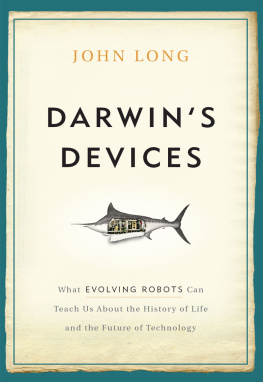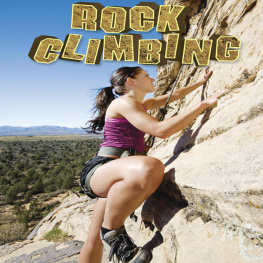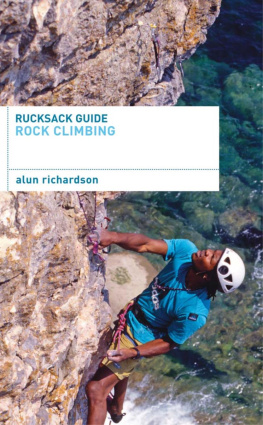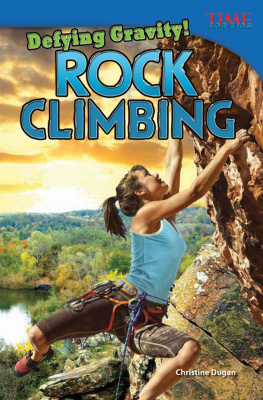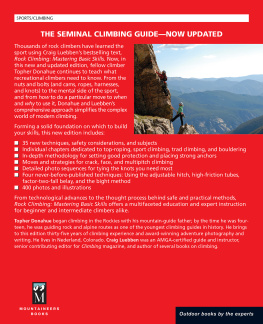John Long is an acclaimed rock climber and author of more than forty books, including several in Falcons catalog. He is one of the most prolific adventure writers out there and has authored magazine articles, screenplays, documentary films, and television and movie scripts, as well as instructional rock climbing books.
Beginning in the mid-1970s with his historic one-day ascent of The Nose route on El Capitan, Long became a mainstay in the world of extreme sports and adventure. He and his elite group of climbers, the Stonemasters, ushered in a new era of big wall climbing with their epic climbs in Yosemite National Park and elsewhere. In the years that followed, John transitioned from rock climbing to international exploration, traveling around the world from the jungles of Southeast Asia to the North Pole. Some of his many achievements include the first coast-to-coast traverse of Borneo and the discovery and exploration of the worlds largest river cave.
John has also built a successful television and film career, producing the International Guinness Book of World Records television show before moving to feature films. The Sylvester Stallone movie Cliff-hanger is based on one of Johns stories.
In recent years, John has continued to write books and articles and to work in television and film. He is also an Adidas Ambassador and frequently works with them at various events around the country.
Bob Gaines began rock climbing at Joshua Tree National Park in the 1970s. Since then he has pioneered more than 500 first ascents in the park.
Bob began his career as a professional rock climbing guide in 1983 and is an American Mountain Guides Association Certified Rock Instructor. He is the coauthor of Rock Climbing: The AMGA Single Pitch Manual, the textbook for the AMGAs single-pitch instructor program.
Bob has worked extensively in the film business as a climbing stunt coordinator. He has coordinated more than forty television commercials and was Sylvester Stallones climbing instructor for the movie Cliffhanger. Bob doubled for William Shatner in Star Trek V: The Final Frontier as Captain Kirk free soloing on El Capitan in Yosemite.
Bob has worked extensively training US military special forces, including the elite US Navy SEAL Team 6, and is known for his technical expertise in anchoring and rescue techniques.
He is also the author of Best Climbs Joshua Tree National Park, Best Climbs Tahquitz and Suicide Rocks, Toproping: Rock Climbing for the Outdoor Beginner, Rappelling, and Advanced Rock Climbing and is coauthor of Climbing Anchors, Climbing Anchors Field Guide, and Rock Climbing; The Art of Safe Ascent (with John Long).
Bobs other passion is fly fishing. He currently holds fourteen International Game Fish Association world records.
S pecial thanks to Jim Thornburg for the great action photographs. Thanks to all the climbers and guides who graciously posed for photos, including Peter Croft, Erik Kramer-Webb, Tony Sartin, Teri Condon, Tony Grice, Patty Kline, Mike Moretti, Erin Guinn, Michael Baines, Steve Schwartz, Lisa Rands, Wills Young, Mike and Lori Satzberg, Roddy McCalley, David Kerner, John Lauretig, Francisco Kim, Alex Nunez, Chris Nor-wood, Frank Bentwood, Farai Muchenje, Melissa Popejoy, Casey Stroud, and Lori Milas. And last but not least, thanks to FalconGuides editorial director David Legere, assistant editor Mason Gadd, senior production editors Ellen Urban and Meredith Dias, layout artist Melissa Evarts, and the entire Falcon staff for putting this all together.
T he most any instructional manual can hope for is to increase a climbers odds of making informed decisions. Every novice has a daunting amount of material to download and make their own, but once put into practice, the techniques and safety protocols eventually become second nature. Provided we stick with established routes on decent rock, most of our doubts have been answered by previous parties. Loose rock, if any, has often (but not always) been trundled off; reliable belay anchors, sometimes fixed, are at any rate possible to build; the route has been charted and rated by consensus; the descent or downclimb established.
With basic competenceif you climb within your abilities, stay vigilant, and use safety checksyour principal concern will usually boil down to the protection problem:Can I arrange solid gear to adequately protect me on the lead in the event of a fall? When this checks out, as it often does, the game is simplified to the most basic challenge of them all: Can I climb this thing?
The electrifying experience of answering this question is the reason we started climbing in the first place. The aim of getting competent with all this gear and all these techniques is to free us up to climb. But since gravity never sleeps, informed decisions are always required. The most benign slab climb remains an adventure because the outcome is never determined before you rope up and cast off. Embracing such challenges is not for everyoneof that we may be sure. But for those of us with a restless spirit and daring dreams, the adventure of ascent is like none other; it helps make our world go round.
Safe climbing!
John Long and Bob Gaines
Knots
Most equipment works in concert with knots, so a few pages on knot fundamentals is prerequisite for going forward. The adage about climbing knots is that no matter how long you climb, youll have only one chance to tie them wrong. Accident reports are full of accounts about injuries to even deaths of people who start tying a knot, get distracted, and never finish the knot. Stay focused while tying all knots until they are correctly completed. Then double-check. Our lives depend on the security of these knots, so they must be perfectly tied every timein rain or shine and in the dark.
Knot tying skill comes through repeatedly tying knots correctly. Uncoil a climbing rope, grab a couple slings and loops of cordage, and practice. Sidebars illustrate the step-by-step. If an active visual guide is needed, many video tutorials are available online.
Knot Terminology
Bend: Two ropes tied together by their ends.
Bight: Two strands of rope doubled back on itself.
Load strand: The strand of the rope that bears all the weight.
Hitch: A knot tied around another object (such as a carabiner or rope).
Standing end: The part of the rope the end of the rope crosses to form a knot.
Tag end: The very end of a rope that protrudes from a knot. Commonly called the tail.
Working end: The side, or part of the rope that is being used during knot tying.
Youll quickly develop a feel for each knot, and your hands will simply tie it tidy as a Christmas bow. Adjustable knots (soon described) are trickier
Hitches
A hitch is a knot that is tied around something. The clove hitch is used to fasten a rope to a carabiner. A friction hitch is a knot tied with a cord or sling around another rope, utilizing friction to make the knot hold when weighted, but releasable/movable without untying when it is unweighted. Hitches are versatile, practical, and easy to learn and to tie. The moment you unhitch them from a carabiner or knob of rock, they unravel. Theres no true knot to begin with, so theres no knot left to untie.
Knot Strength
If properly tied and utilized, knots commonly used in climbing and described in this manual are suitable for rigging the roped safety system. None of these knots will weaken a rigging system sufficient for it to fail because of the knot. The critical concern here is properly tied. Joining knots, as we will see, always requires good dressing and adequate tails. And cinch them down tight before loading.


